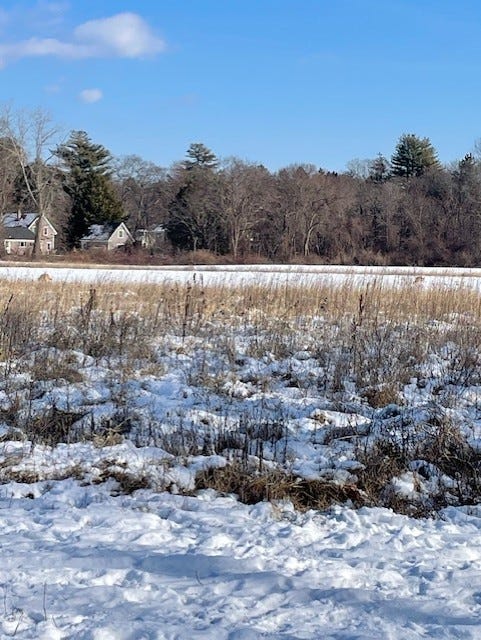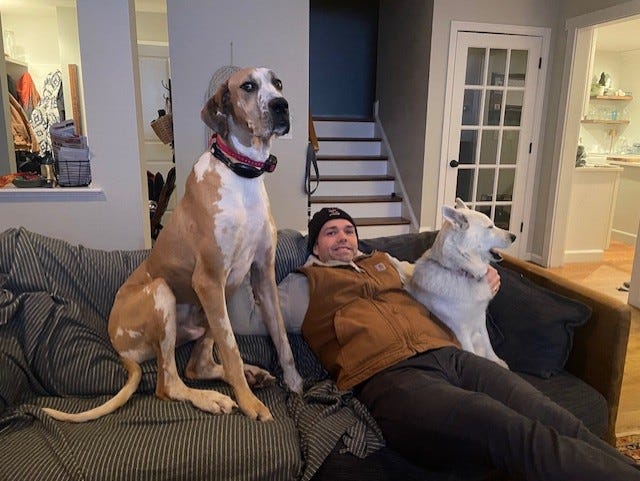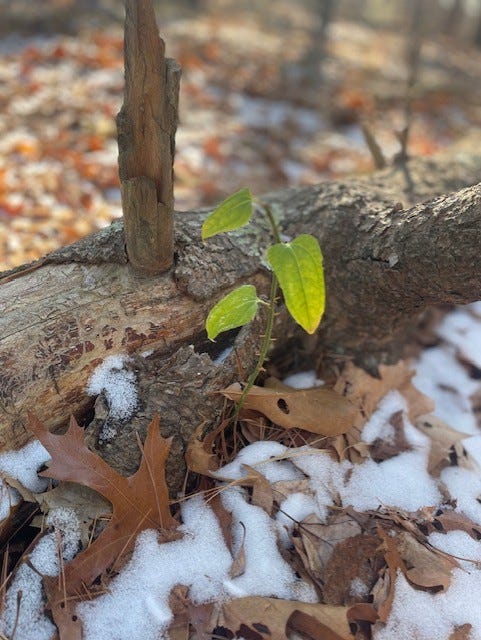It’s March, Moga friends! The month of spring when the world awakens from its slumber and we are awarded brighter and longer days. Every year, I’m amazed by how much my mood and overall attitude shift when the sun rises earlier and the birds start chirping again. And it’s not just me—animals respond to the change in seasons, too (hence all the extra dog hair in my house from shedding that winter coat!). It’s part of our innate mammalian instinct. Cold and dark signal rest, while warmth and light bring energy and life.
A few weeks ago, I went for a walk to the farm across from our neighborhood and was joined by two coyotes. They were curious but content to keep their distance, searching for food while keeping a watchful eye on me (and on a woman walking two small dogs—thankfully, she spotted them and left). While coyotes don’t really slow down in winter, their behavior shifts in spring—mating, denning, and preparing to care for their pups. Watching them that day was a reminder that, just like the animals around us, we also come alive again in spring.
For me, the month of March is a chance to, quite literally and figuratively, wake up from deep rest and see the world with fresh eyes. While January is often seen as the time for resolutions and reinvention, I think March is when I actually pause and take stock of what makes me feel most alive—most awake.
Speaking of waking up, I really struggle with this! It is literally painful for me to wake up in the mornings when it’s dark and cold. Can you relate? I’m always trying to crack the code on a winter morning routine that doesn’t feel like a punishment. I’ve tried forcing myself up to work out first thing in the morning (this doesn’t feel right), easing into the day with a Yoga with Adriene video (better, but depends on the day), and sleeping as late as humanly possible without being late for work (do you know how hard it is to be a functioning adult in a library full of kids ONE hour after you’ve woken up??), yet nothing seems to stick. Since I don’t anticipate moving to a warmer climate anytime soon, I need to figure this out.
I went out to dinner with my good friend Kate this past month, and she mentioned her morning routine: waking up before her family, letting the dog out, making a cup of coffee, and just sitting—sipping her coffee, alone, easing into the day. I couldn’t help but feel a little envious that she’s got it all figured out. So, I gave it a shot. A few mornings this month, I forced myself out of bed at 5:15, went downstairs, lit a candle, made tea, and read my book. It was quiet and lovely. But the reality is, I think my Mexican genes run deep and I require a lot of sleep, so even though I enjoyed the quiet mornings, 5:15 still hurt.
But this made me think about Kate’s approach to lots of things. She’s one of my hockey mom friends, so I see her a lot and I’ve known her for many years. She’s often coming to the rink from a run, a walk with her dog, or a yoga class. She prioritizes what fuels her, unapologetically, and I love this about her. Over the years she has inspired me to think about the habits, routines, and small moments that keep me feeling awake, alive, and at my best.
Call it her instinct or a keen since of awareness, she knows what she needs. We all have instincts that guide us. Our bodies know when to rest, when to seek warmth, when to nourish ourselves. But unlike animals, we often ignore these instincts, too caught up in the noise and busyness of our lives to listen. And then beyond instinct is something even more subtle: intuition. While instinct is often tied to survival, intuition is more about knowing what helps us thrive. It’s that quiet voice nudging us toward what feels right, even when we can’t quite explain why.
For the month of February, I took a weekly tarot card workshop hosted by my friend, Rachel, an integrative spiritual intuitive. She taught us the basics of tarot, but what I loved most was how deeply it connected to intuition. We created an “intuitive thesaurus” for the different elements that appear in the cards, spending time reflecting on what they personally meant to us. Intuition, as she explained, is an inner sense that we all have access to and empowers us to be in our best alignment. When you start noticing the habits, activities, and moments that make you feel most alive, you’re tuning into that inner guidance system. And the more you practice honoring what energizes and fulfills you, the stronger your intuition becomes.
So this March, I find myself leaning into the activities, routines, and rituals that make me feel most alive. I’m taking my cue from nature, watching how instinctively the world around me knows when to awaken, shift, and grow. Maybe this is my intuition talking, nudging me to trust that I already know what I need. ❤️
Love Letter From Nature
There’s something about the vibrancy of green in spring that energizes me. The fresh chlorophyll coursing through thin leaf veins adds a pop of color that’s been missing for months. So when I noticed a tiny leaf sprouting from a hollowed-out tree on a recent walk, I stopped dead in my tracks. What a lovely reminder that we’re all waking up, stretching toward the sun, filling ourselves up with the nutrients we need to transition to this new season.
My PictureThis plant ID app (which I love and highly recommend, btw!) identified it as a Cat greenbrier, or Prickly-ivy. Traditionally, it’s been used as a natural fencing material because of its dense, thorny nature. It thrives when temperatures stay above 41°F but struggles when they rise above 95°F, causing its tips to dry out and making it more susceptible to sunburn. It also grows best in full sun, while limited sunlight slows its growth.
Why am I telling you this? Because even this tiny vine has specific needs to stay healthy. No one tells the plant what to do. It relies on its own natural rhythm. It’s in these moments, what I call love letters from nature, that I’m reminded of what a great teacher nature is. Fun Fact: this vine is resistant to fire!
Kid Moga
Like I mentioned last month, I’ve been spending a lot of time talking with kids about mindfulness and yoga. My "Varsity Moga" group at Fenn has been disengaged recently, but instead of getting frustrated with their lack of participation, I paused and asked myself: What behaviors are they exhibiting, and what does it mean they need? I realized that these boys thrive on competition and challenge, so I focused on yoga poses that started with fairly accessible moves and increased in challenge as we added on. The result? What began with half the group lying on mats, sometimes disengaged, shifted to almost the entire room actively flowing from down dog to dolphin and back again (have you ever tried this?—it's not easy!). While this approach worked, I’ll have to keep checking in and be ready to adapt based on how things evolve over time.
This same theme emerged recently in our family, too. G really struggles in library class. He struggles to sit still, to follow the library rules, and to stop talking with friends. After a self-reported particularly hard library class, I emailed his teacher to get more information. In that class—and in many others—he’s simply not getting what he needs to be his best. And I’m not talking about his desire to talk over his teacher (which isn’t cool). What I’m talking about it why is he talking over her? What energy does he have that’s not being released, and why is it coming out during class? What can we do to help him without disrupting others? It’s a delicate balancing act.
I shared some background about his profile. He received occupational therapy when he was younger due to sensory input needs. His nervous system craves a certain level of sensory stimulation (think swinging, hanging upside down, or applying pressure) to feel regulated. As you can imagine, it’s hard to find this type of simulation when you’re sitting in a classroom for most of the day. When he listens to a story, he loves to move. I’m continually impressed by how much he absorbs while simultaneously building Legos, hanging upside down from his bed, or shooting foam pucks into his knee hockey net. His personality also demands that he understand the why behind rules and expectations. I don’t believe he’s being defiant (though some days, yes, he definitely is!), but simply curious. In a classroom, a kid like G needs to understand why certain rules are in place and be given a task to do while listening to a story (there’s always a book waiting for repair!). We’ve learned that he’s at his best when he’s outside running around or building something creative in our garage. Of course, it would be easier if he just watched TV all day (my house would be probably be cleaner, too!), but he wouldn’t thrive in those conditions.
I truly believe that we can live in a world where we consider the needs of each person and get curious about how we can make changes to ensure everyone is getting what they need to be their best. Instead of judging, criticizing, or even punishing people for less-than-ideal behavior, can we look at it differently? What is this person not getting right now? It’s easy to pass judgment in these situations, but I’m learning that there’s often more beneath the surface.
I know some of you might be thinking: What a hippie, dippie soft idea! But I’d argue that the methods we’ve been using for years haven’t been working. In fact, I’d even question if they ever really worked. We’ve seen the consequences of this approach in many forms: substance abuse, violence, social isolation, a growing disconnect among young people, to name a few. Today, anxiety and depression are at all-time highs, especially for teens. This isn’t just a shift in the air—it’s a sign that something fundamental has to change. We’ve been enforcing a one-size-fits-all way of thinking for too long, and it’s not helping our kids (or any of us). If you don’t believe me, just read Jonathan Haidt’s book, The Anxious Generation.
But here’s the good news: we can make changes. We can begin by listening, being patient, and adjusting our approach to meet the needs of the people around us. When we take the time to understand, we create a space where everyone can shine. 🌞
Recommendations from a Mindful Library
OK, that last section was a little heavy. Let’s lighten up the mood a little. The Oscars are on Sunday, March 2nd (cue Oscar music now), and the ALA book awards were recently released. So, to honor awards season, I’m going to share a bunch of award-winning titles that are worth checking out (get it? 😉).
My Daddy is a Cowboy, which I mentioned in this newsletter, received both a Caldecott Honor and the Coretta Scott King Illustrator Award. It’s a joyous celebration of a special bond between a child and father, and the illustrations are beautiful.
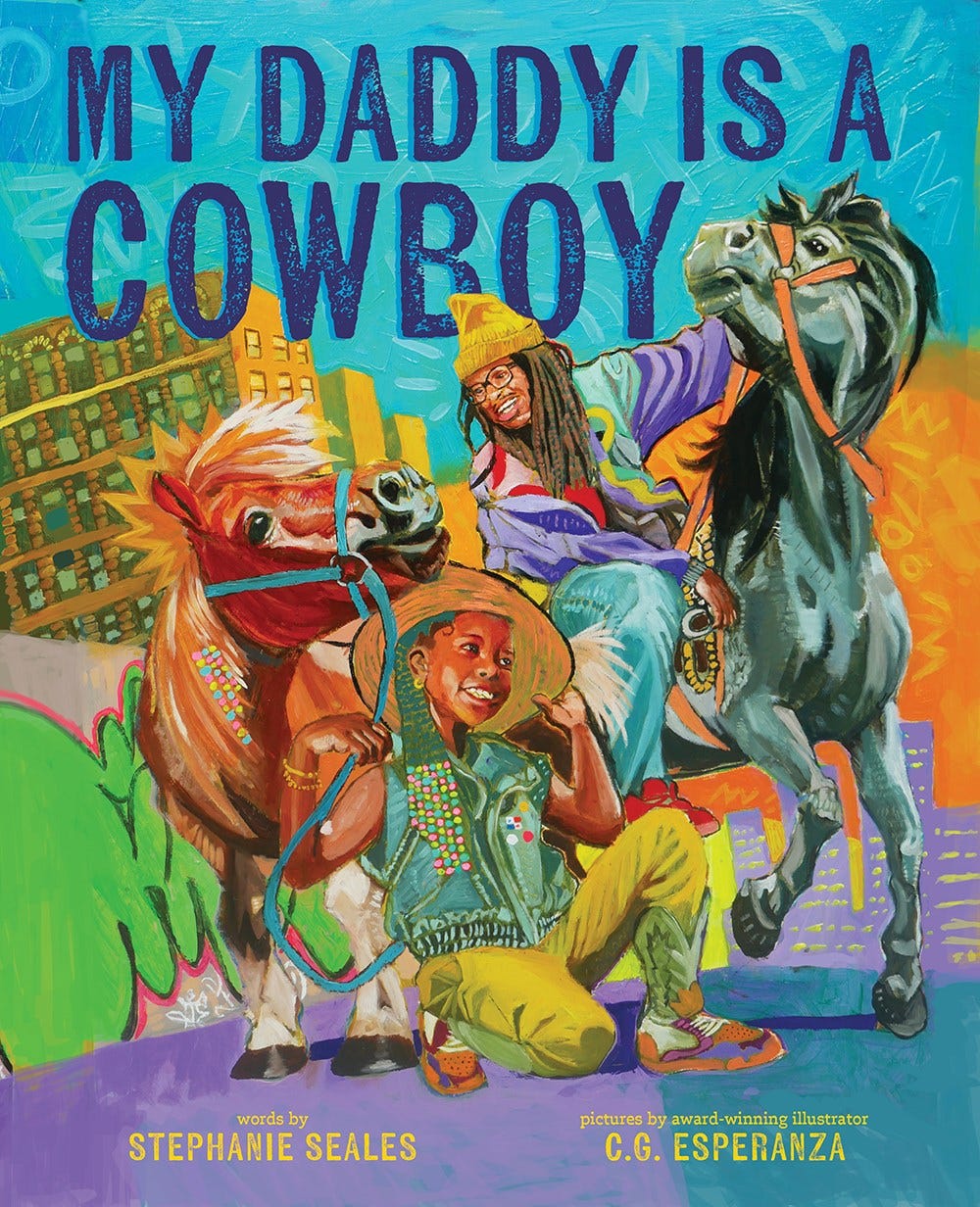
G recently had to pick a book for a March Madness reading competition, so we chose the 2025 Newbery Medal winner, The First State of Being. It’s a time travel book, which we don’t usually gravitate toward, but it’s set in 1999 (shout out to the ‘90s!) and deals with Y2K. I thought it would be fun for both of us, and I was right. The book was really fun (and a little sad at times), and the ending was so clever!
![The First State of Being [Book] The First State of Being [Book]](https://substackcdn.com/image/fetch/$s_!HK6x!,w_1456,c_limit,f_auto,q_auto:good,fl_progressive:steep/https%3A%2F%2Fsubstack-post-media.s3.amazonaws.com%2Fpublic%2Fimages%2Fbe8f11b0-6d41-4776-b33a-4082485666fb_1685x2560.jpeg)
I’m in the middle of a middle grade/YA memoir series I can’t put down. Free Lunch is book one of a three-part series written by Rex Ogle about his life growing up on the free lunch program in middle school (book 1), as well as his complicated home life. I’m currently reading the second book, Punching Bag, and I’m eager to dive into the final one, Road Home. The intense, heartbreaking experiences grow more intense as Rex moves through his young adult life, so I’d recommend this series to older teens and adults. Free Lunch received the YALSA Excellence in Nonfiction Award.
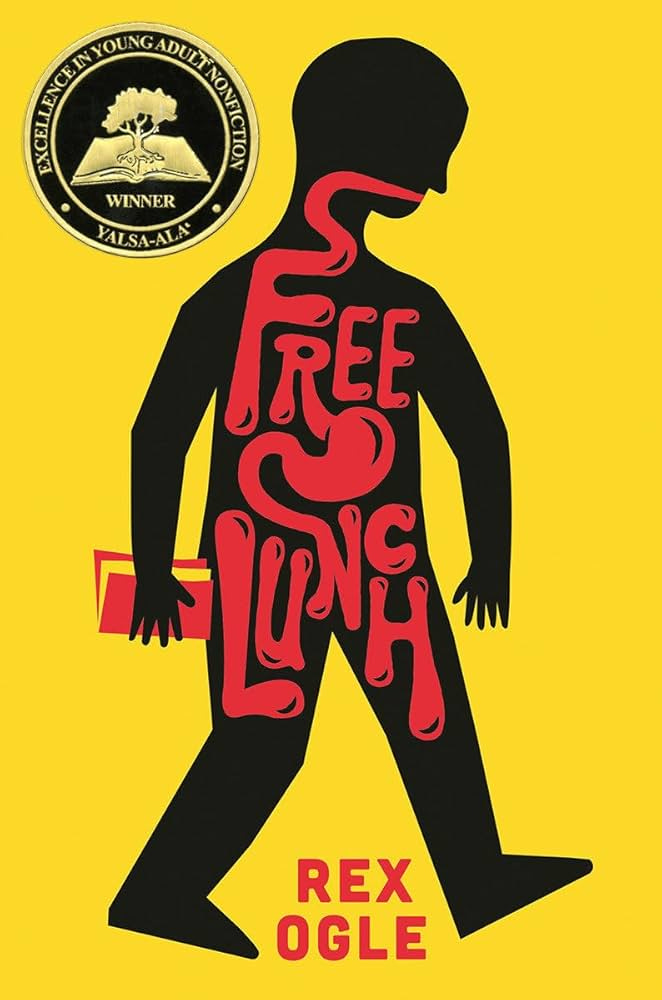
In my search for books about food insecurity for a 9th grade project, I picked up Breaking Night, which won the Alex Award, the Chutzpah Award, and the White House Project’s Role Model Award. While I quickly realized this wasn’t the best fit for the project, I couldn’t put down Liz Murray’s inspiring story. Liz was a homeless teenager who didn’t attend high school until she was 17, but she eventually received a New York Times scholarship to attend Harvard. The book was tough to read at times due to her parents drug use, but it was all the more difficult to put down because of her inspiring journey.

Inspired by The First State of Being, I picked up an adult time travel book, The Ministry of Time. It’s won several recognitions, including being a NYT Bestseller, a Goodreads Choice winner for Sci-Fi, a GMA Book Club pick, and part of Barack Obama’s Summer Reads List. The Ministry of Time is a fun read worth checking out. It’s about a government official who’s offered a classified job in a new department that collects "expats" from history to investigate whether time travel is possible. These officials act as “bridges” for the ex-pats, helping them settle into their new lives. Part sci-fi, part romance, at times I was deeply captivated by the story, and at other times, I found myself a bit lost in the technical aspects of time travel and historical events. Regardless, it’s definitely worth checking out.
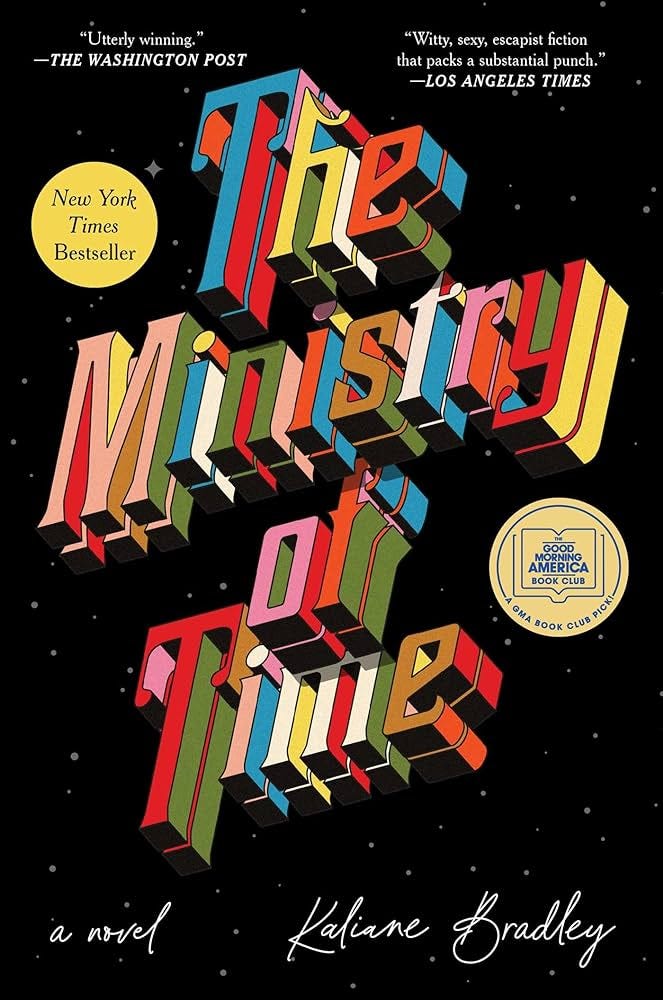
Final Thoughts…
D just finished up his high school hockey season with a tough loss in the first round of playoffs. He had an awesome season, and it was so fun to watch. He worked hard to move up the lines as the season progressed and even scored a crucial game-winning goal in overtime. I didn’t play sports growing up, so I’m always amazed at the commitment level of these student-athletes. After a long day at school, they go straight to the rink for practice. Many days, after practice, they head to strength and conditioning, and on some days, then mindfulness or film sessions. Most nights, this means they don’t come home until 6:30-7pm. Then, they eat and start on homework. Sundays are their only day off, and then the whole cycle begins again. And what’s even more impressive (especially for hockey) is that this goes on for 4 months straight! So, of course, when it all ends, it feels like a giant loss—especially when it doesn’t end the way you were hoping.
When Cameron first experienced the end of a high school hockey season, it took us a few years to realize those few weeks after the season ended were always a challenging time for him. D was already thinking about this after the big loss: "What am I going to do tomorrow?" It’s in these moments that it becomes even more critical to have a strong sense of what makes us feel most alive and what we need to take care of ourselves. Yes, hockey season has ended, but what is it about hockey that brings so much joy? Is it the time spent with friends? The physical activity? Pushing yourself past boundaries? Once we can identify what makes these moments so important, we can start to find it elsewhere—in a different way or through new experiences.
I don’t really have all the answers on how to recover after a hard season, but I do know one thing to be true, at least for our family. A McDonald’s M&M McFlurry fixes just about any problem—especially the heartbreak of a playoff loss (this has been a losing playoff Daley tradition for at least 10 years and counting). So, when the game and season ended on February 26th, we left the rink at 10pm and drove straight to McDonald’s. While it didn’t make all the pain go away, it did help.
I’ll leave you with this: The next time I write to you, spring will be well underway. The landscape will have drastically changed, the temperatures will be warmer, and we’ll be welcoming a lot of new growth and life. Let this season be an invitation—an opportunity for you to crawl out of hibernation, dust off what no longer serves you, and explore what you need to feel fully alive. What fuels you? What routines help you feel awake, energized, and connected? As the world awakens, let’s do the same—tuning in, trusting our instincts, and making space for what truly matters.
Sending Love,
Leonor
Leonor is a licensed ELA teacher, Director of the Hammett Ory Library at The Fenn School, and Moga (Mindfulness + Yoga) Practitioner. She is also the mother of three boys and has learned a whole lot from making mistakes and trying again.




